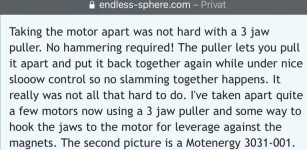eee291 said:You have to multiply battery Current x Volts to get your power (Kw) not phase Current.
Depends on what you are saying. Phase amps can be and is commonly much higher than battery amps. If they were the same no one would make the distinction between battery and phase amps.
battery watts = battery amps x battery volts
motor watts = phase amps x battery volts




